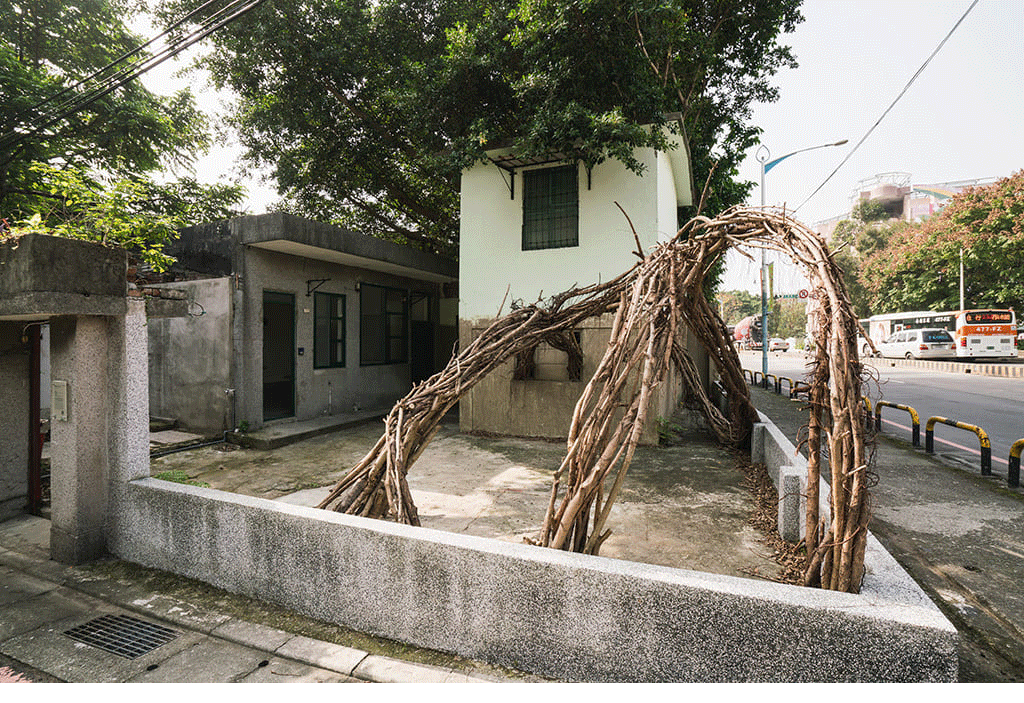
Recycling scenery, 2017, mixed materials (Nanzai Ditch mud, fans, projection lamps, tree branches, recycled living objects), installation, dimensions variable
Northern Art Village F
Imagination roams in the air and takes root like grass. This work reproduces a scenery based on Kuei-Chih LEE’s memory of a river and echoes the theme of “air plants” emphasized in this exhibition. This recycled scenery is also based on his memory of the Nanzai Ditch in the early days.
Banqiao is an alluvial plain created by sediments accumulated by the Dahan River and the Xindian River when they crossed paths. In the early days, Banqiao was a “floating land” comprising territorial waters, sandbanks, and marshes. As a result, early residents used “floating land” and “nanzai” to describe Banqiao’s rare and beautiful landscape. The Nanzai Ditch is the only river in Banqiao without a constructed cover during the city’s previous urbanization endeavors. The ditch region features a low terrain and has been exposed to the threat of floods over the years. Accordingly, the first floor of early buildings is usually utilized as a flood control space, resulting in a remarkably unique urban landscape.
By watching the city and the underground space from the sky using one’s imagination, he/she can see watermarks, roads, electric wires, and tree roots. This habitat is like plants in that it is full of vitality. In addition, the living environments are “marks” in space created to facilitate survival and represent the natural necessities that people need to live.
Memories are echoes of experience. Lee smeared mud obtained from the Nanzai Ditch on a wall inside a room to create a view after a flood. Tree roots, like water, occupy this room and those that are intertwined mirror the living space and resemble watermarks and messy and intertwined wires in the alleys. On the upper floors, rooms full of objects reflect previous lifestyles. Images of spinning fans and illuminating lights are visibly projected onto a wall, producing a strange scenery following the flood. This work reveals Lee’s strong sense of nostalgia for past scenery that has been destroyed and uses the image of water to connect the city’s special landscape, creating a balanced and symbiotic recycled scenery between man and nature.